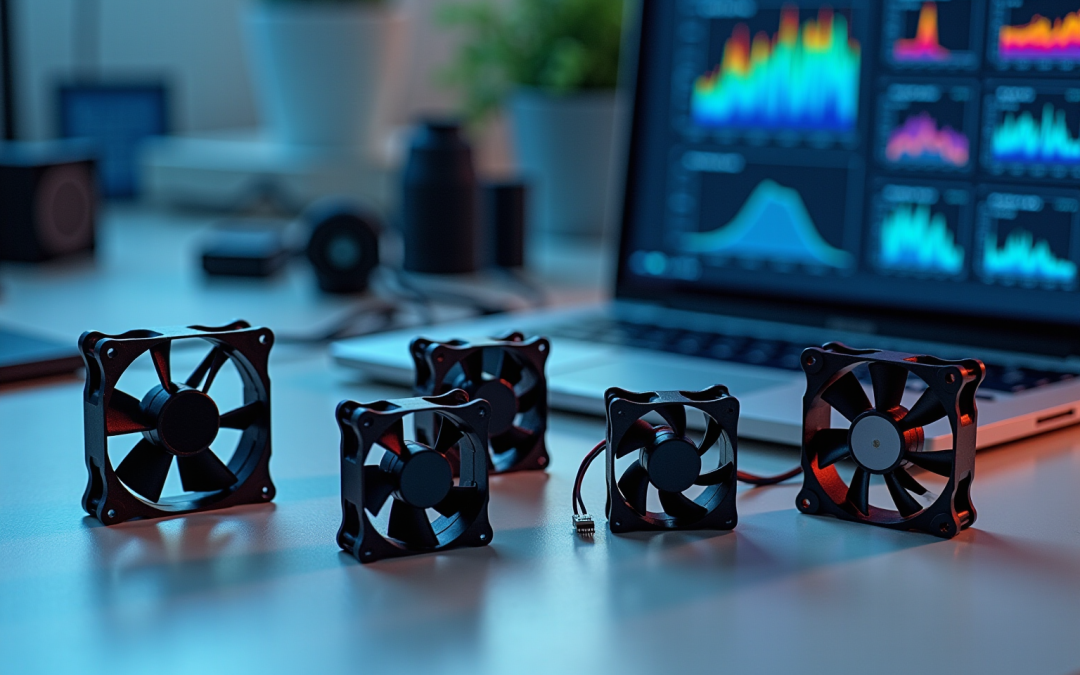Introduction
The electronics landscape is in a constant state of evolution, presenting engineers with the dual challenge of enhancing performance while effectively managing energy consumption. Among the myriad solutions available, 5V DC fans emerge as a standout option, offering a compelling blend of efficiency, compactness, and versatility that cannot be overlooked. As the demand for effective thermal management escalates, one must consider: how can these seemingly simple devices reshape the realm of electronic design and operation? This article explores ten compelling benefits of 5V DC fans, illustrating why they are becoming essential tools for electronics engineers.
Gagner-Toomey Associates: Innovative Cooling Solutions for Electronics Projects
Gagner-Toomey Associates addresses a critical challenge in the electronics sector: maintaining optimal thermal management. Their advanced temperature control systems, particularly the diverse range of 5v dc fans, are essential for ensuring that electronic devices operate efficiently and reliably.
By leveraging cutting-edge technologies, Gagner-Toomey showcases a comprehensive portfolio of electronic solutions that encompass cooling, power, timing, RF, and interconnect systems. This commitment guarantees that professionals in the field have access to dependable and efficient cooling options tailored to their specific needs.
Exceptional customer support is ingrained in Gagner-Toomey’s culture, empowering engineers to enhance the performance and longevity of their projects. With a focus on delivering not just products but also solutions, Gagner-Toomey Associates stands as a trusted partner in the pursuit of excellence in electronic thermal management.
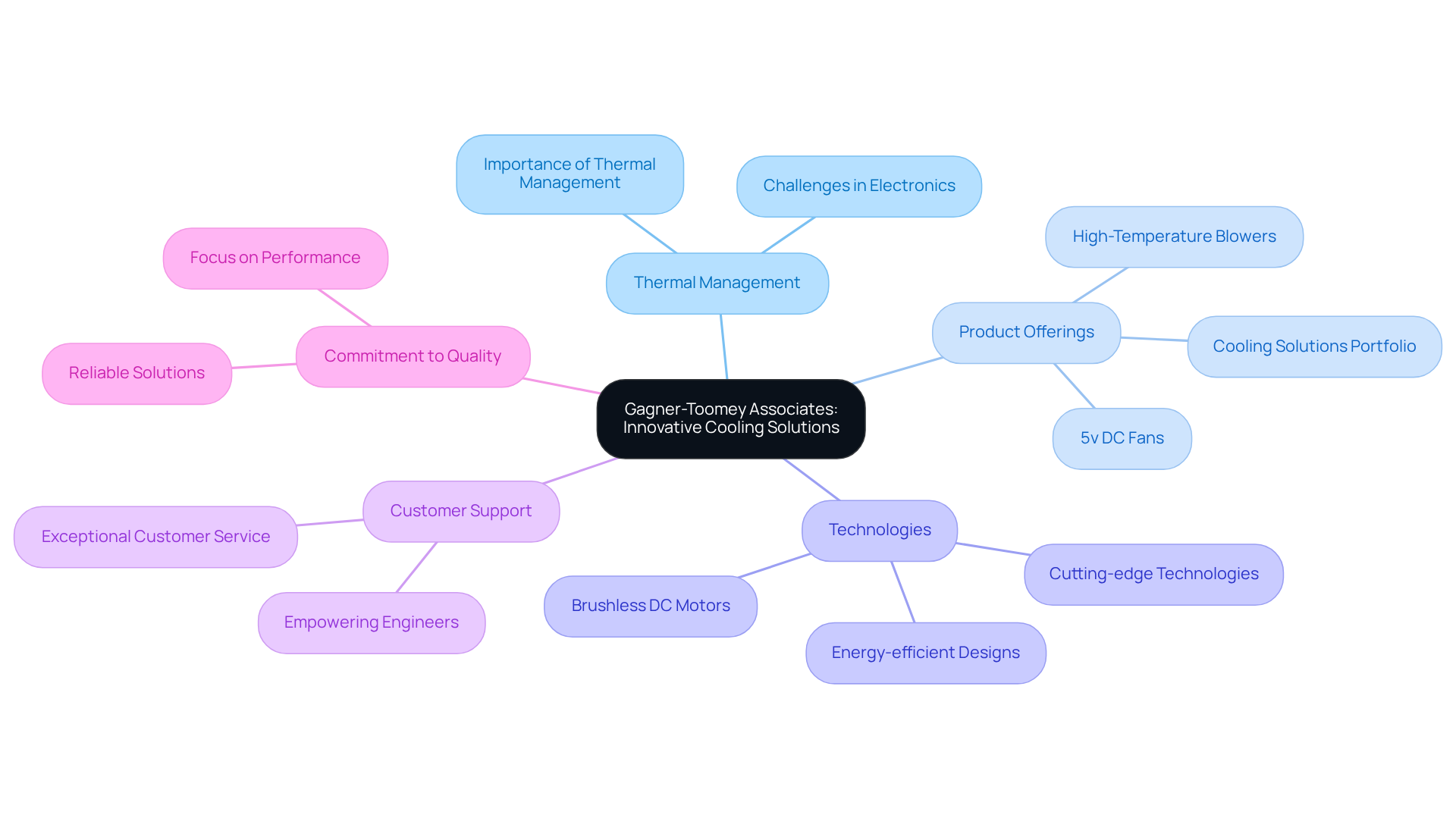
Energy Efficiency: Reduce Power Consumption with 5V DC Fans
5V DC devices address the pressing issue of energy consumption by operating at lower voltages, which significantly reduces power usage compared to higher voltage alternatives. These devices can consume up to 70% less energy than traditional AC units, leading to lower electricity costs and minimized heat generation – an essential factor for sustainable design. For instance, recent studies reveal that a 5V DC fan can generate the same airflow that would cost $10 with an AC fan for only around $3 in electricity. This remarkable efficiency allows engineers to implement these devices across various applications, from cooling electronics to automotive systems, without the concern of excessive energy consumption.
In the realm of electronics, 5V DC devices play a crucial role in preventing overheating in computers and servers, showcasing their effectiveness in maintaining optimal performance while being environmentally friendly. Furthermore, the extended lifespan of DC units, coupled with their reduced acoustic footprint – even at higher speeds – renders them ideal for sensitive environments. The adoption of these devices not only supports energy-saving initiatives but also aligns with the growing demand for versatile and efficient temperature regulation in modern engineering projects.
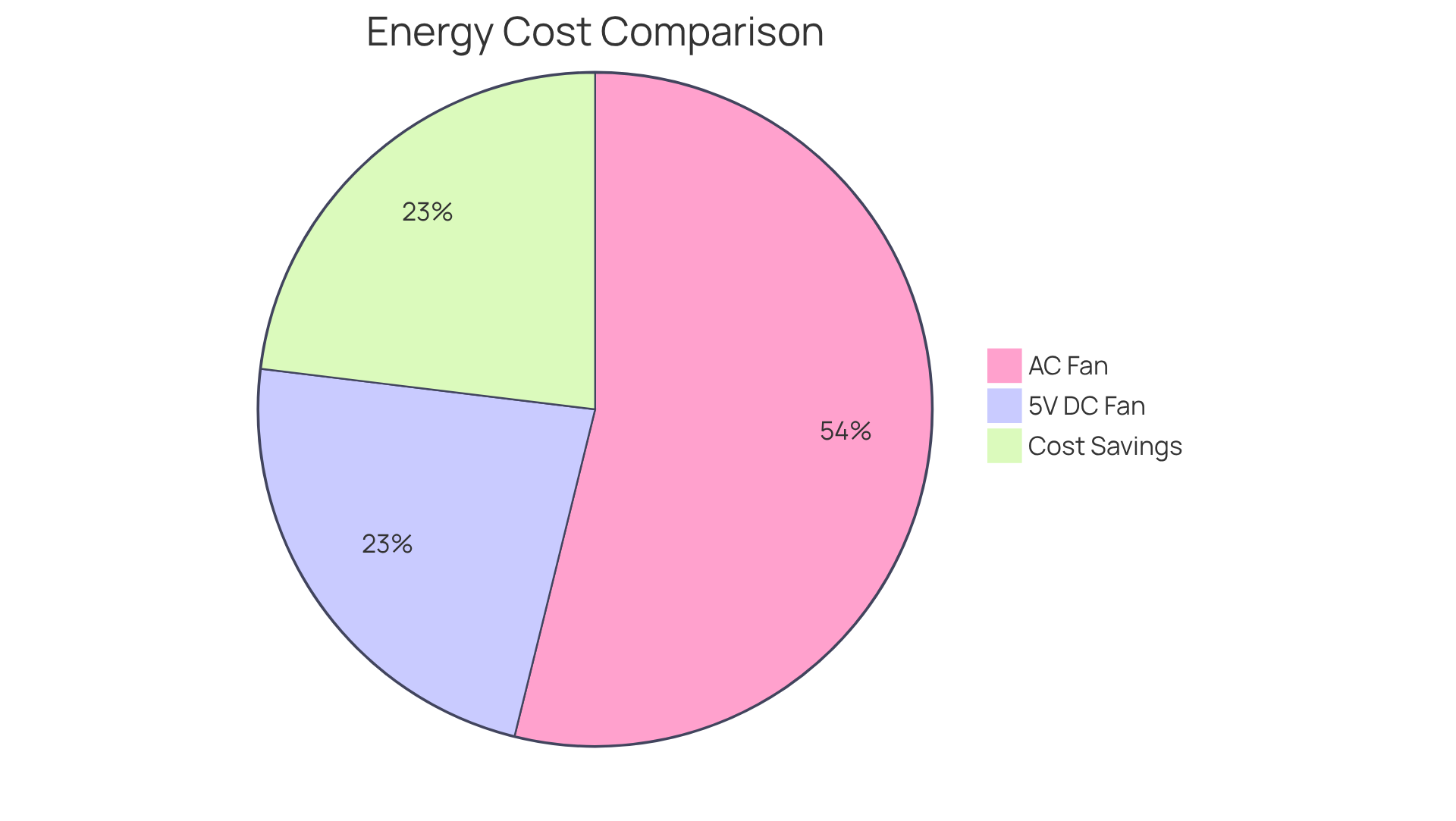
Compact Design: Maximize Space in Your Electronics Projects with 5V DC Fans
One of the standout features of a 5v dc fan is its compact design, which allows it to fit seamlessly into tight spaces within electronic devices. This characteristic is particularly advantageous for applications such as portable electronics, where space is at a premium. Importantly, the compact size of these 5v dc fans does not compromise their performance, making them a practical solution for engineers who aim to enhance their designs without sacrificing efficiency in temperature management. By integrating these blowers, engineers can optimize their products, ensuring effective cooling in limited spaces.

Versatility: Adapt 5V DC Fans for Various Electronics Applications
5V DC fans are known for their remarkable versatility, finding applications in a wide range of environments. From cooling critical computer components to ventilating enclosures in consumer electronics, their efficient operation makes them ideal for both industrial and consumer uses.
In industrial electronics, these devices play a crucial role in maintaining optimal temperatures for machinery and control panels, ensuring reliability and performance. Meanwhile, in consumer electronics, they enhance air circulation in appliances like refrigerators and air purifiers. With the ability to adapt to specific temperature management needs, engineers can customize these blowers to boost efficiency across various projects.
A significant advancement in the technology of the 5V DC fan is the incorporation of brushless motor technology. This innovation not only reduces energy consumption but also enhances durability, making them a preferred choice in contemporary electronic designs. Furthermore, the integration of Pulse Width Modulation (PWM) control allows for precise adjustments to fan speed, optimizing both performance and energy efficiency.
As the demand for compact and efficient temperature regulation solutions grows, the adaptability of the 5V DC fan positions it as an essential component in the evolving landscape of electronics. The anticipated rise in 5V DC fans is driven by the increasing power requirements of electronic devices, further underscoring their importance. Additionally, their flexibility in accommodating low voltage power input options solidifies their role across diverse applications.

Quiet Operation: Enhance User Experience with Silent 5V DC Fans
One of the primary advantages of using a 5v dc fan is its remarkably quiet operation. This feature is particularly beneficial in environments where sound levels must be meticulously controlled, such as home theater setups or medical apparatus. The design of these devices minimizes noise, significantly enhancing the overall user experience. By enabling seamless functionality and comfort, the 5v dc fan not only meets but exceeds the expectations of users who prioritize tranquility in their settings. Therefore, considering the integration of a 5v dc fan can lead to substantial improvements in both performance and user satisfaction.

Ease of Integration: Simplify Your Electronics Projects with 5V DC Fans
The 5V DC fan units stand out for their seamless integration into electronic systems, equipped with standard connectors that significantly enhance compatibility with a wide range of power supplies. This design simplicity empowers professionals to implement efficient temperature regulation methods swiftly, minimizing the need for extensive modifications to existing designs. The straightforward installation process not only saves time but also optimizes resource allocation, making these devices a preferred choice in numerous engineering projects.
By utilizing standard connectors, engineers can streamline their projects, ensuring that temperature control methods are both effective and manageable. Furthermore, these devices boast a minimum lifespan of 30,000 hours at specified voltage and temperature, providing a reliable thermal management solution. As Ken Chiu, Sales Director of Fan and Display Systems at Delta Electronics (Americas), aptly puts it, ‘This 5v dc fan not only delivers exceptional performance but also integrates seamlessly into various applications, ensuring both reliability and user satisfaction.
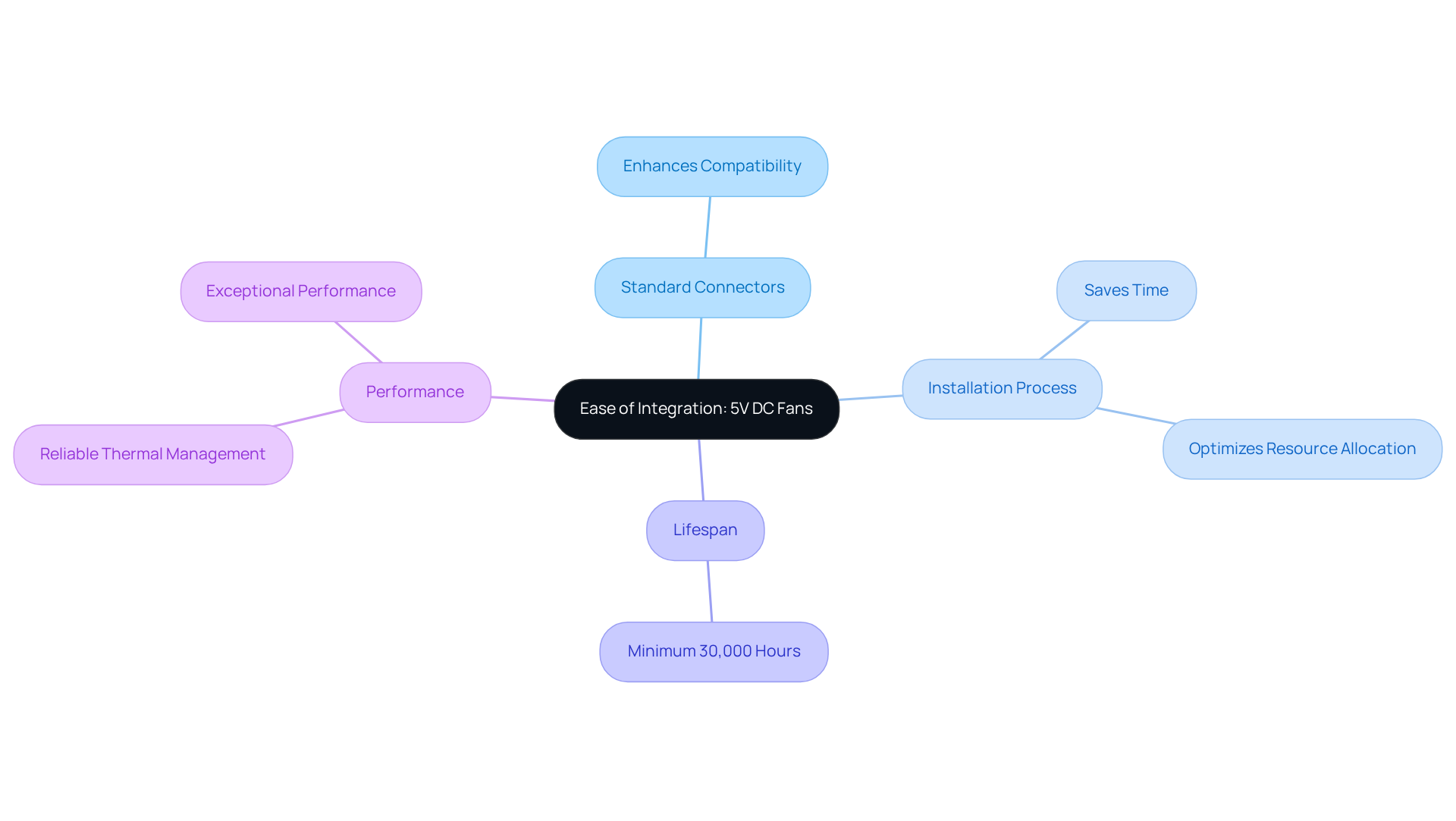
Reliability: Ensure Consistent Performance with 5V DC Fans
Devices like the 5V DC fan stand out for their exceptional reliability and durability, making them ideal for long-term applications across various sectors. These devices are engineered to endure harsh operating conditions, consistently delivering optimal cooling performance even in challenging environments characterized by temperature fluctuations, dust, and humidity.
For example, studies show that DC devices can function effectively in temperatures ranging from -40 °C to +85 °C, ensuring operational capability in extreme conditions. Their brushless design not only extends service life but also significantly reduces failure rates compared to traditional AC units, which are prone to greater wear and tear. Furthermore, DC devices consume up to 70% less energy than their AC counterparts, enhancing efficiency and reliability in long-term applications.
In the realm of electronics, the 5V DC fan has proven invaluable, maintaining performance in critical applications such as heat dissipation from CPUs and GPUs, where reliability is paramount. Input from technicians underscores the importance of durable temperature control solutions, particularly in industries like automotive and medical devices, where dependable performance is crucial.
The variable speed regulation feature of DC units allows for tailored temperature management, further broadening their applicability across diverse settings. Overall, 5V DC fans not only enhance the reliability of electronic systems but also empower professionals to confidently achieve their design objectives.

Cost-Effectiveness: Optimize Your Budget with Affordable 5V DC Fans
5V DC blowers present a compelling solution for professionals aiming to enhance budget efficiency in cooling systems. With competitive pricing, these devices not only boast low operational costs but also consume significantly less energy than traditional air conditioning units – typically using only 15-30 watts compared to 50-100 watts for their AC counterparts. This energy efficiency leads to substantial savings over time, making them suitable for both small-scale projects and extensive industrial applications.
For example, operating a 75-watt ceiling fan continuously incurs an annual cost of approximately $112, which breaks down to about $37.50 when used for 8 hours daily. In stark contrast, a 5V DC fan can drastically lower this expense, allowing designers to allocate resources more effectively. By strategically integrating these devices into their designs and raising the thermostat by 4-6°F during use, engineers can enhance cooling solutions without sacrificing performance. This approach ultimately yields cost-effective results that support innovative projects.
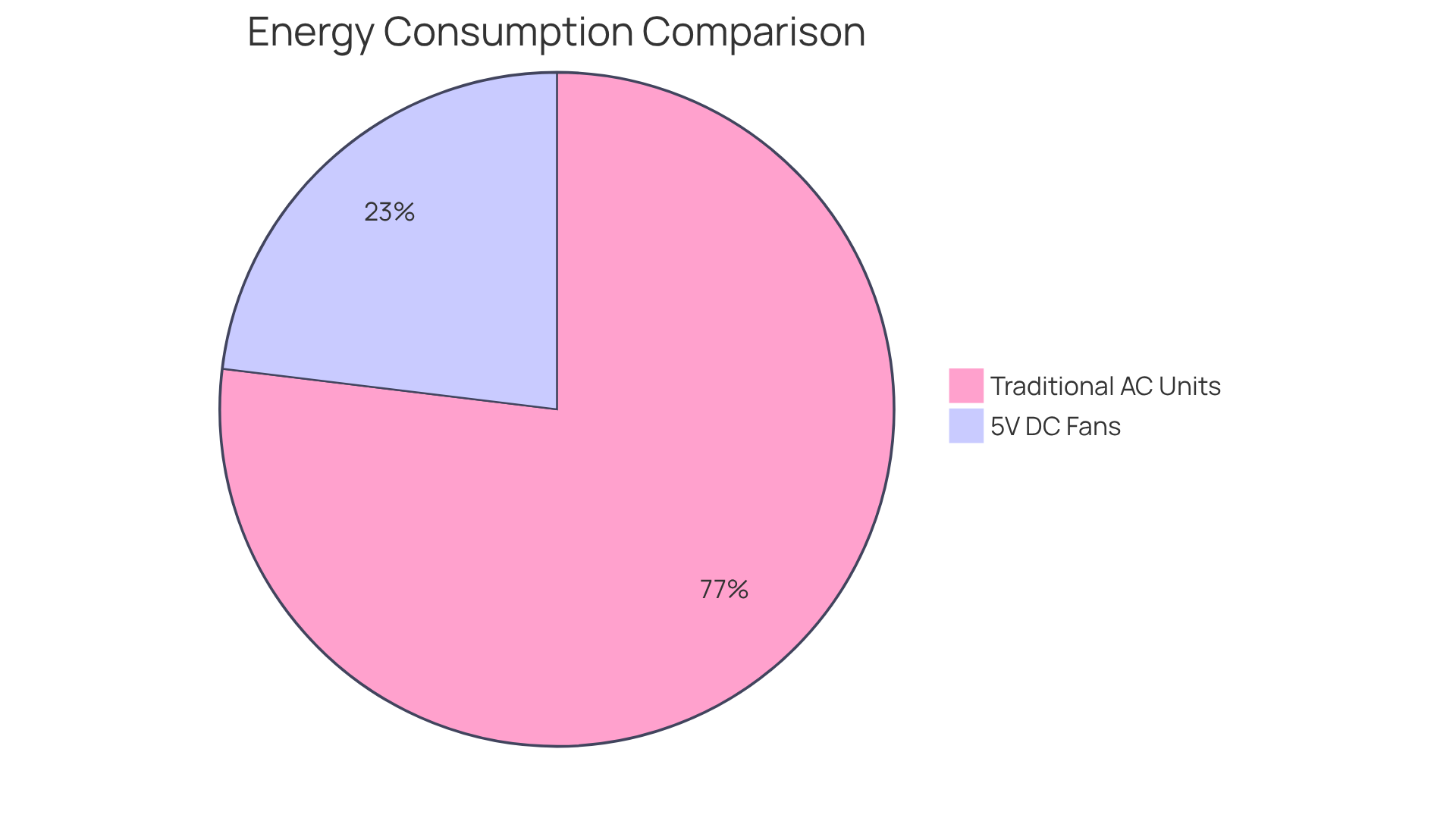
Improved Airflow: Maintain Optimal Temperatures with 5V DC Fans
5V DC fans are pivotal in enhancing airflow, a critical factor in maintaining optimal temperatures within electronic devices. These blowers effectively circulate air, playing a vital role in dissipating heat generated by components. This process prevents overheating and ensures reliable operation. For instance, the OD4010 fan, which boasts an airflow range of 4.7 to 12 cfm, excels in applications requiring moderate temperature reduction.
As engineers face challenges with traditional cooling methods due to increasing power densities in modern electronics, the airflow capabilities of a 5V DC fan become essential for improving thermal management. Conventional temperature regulation techniques, such as heat sinks and fans, are reaching their limits, particularly as AI workloads escalate power densities. This trend underscores the growing importance of adopting the 5V DC fan in electronic designs.
Moreover, the integration of advanced thermal modeling and simulation tools enables precise calculations of heat dissipation. This capability allows engineers to optimize fan placement and performance effectively. Additionally, the benefits of additive manufacturing in creating complex shapes for enhanced thermal efficiency further highlight the need for innovative temperature management solutions.
As the demand for effective cooling methods intensifies, the utilization of the 5V DC fan becomes increasingly crucial in designing reliable electronic systems.
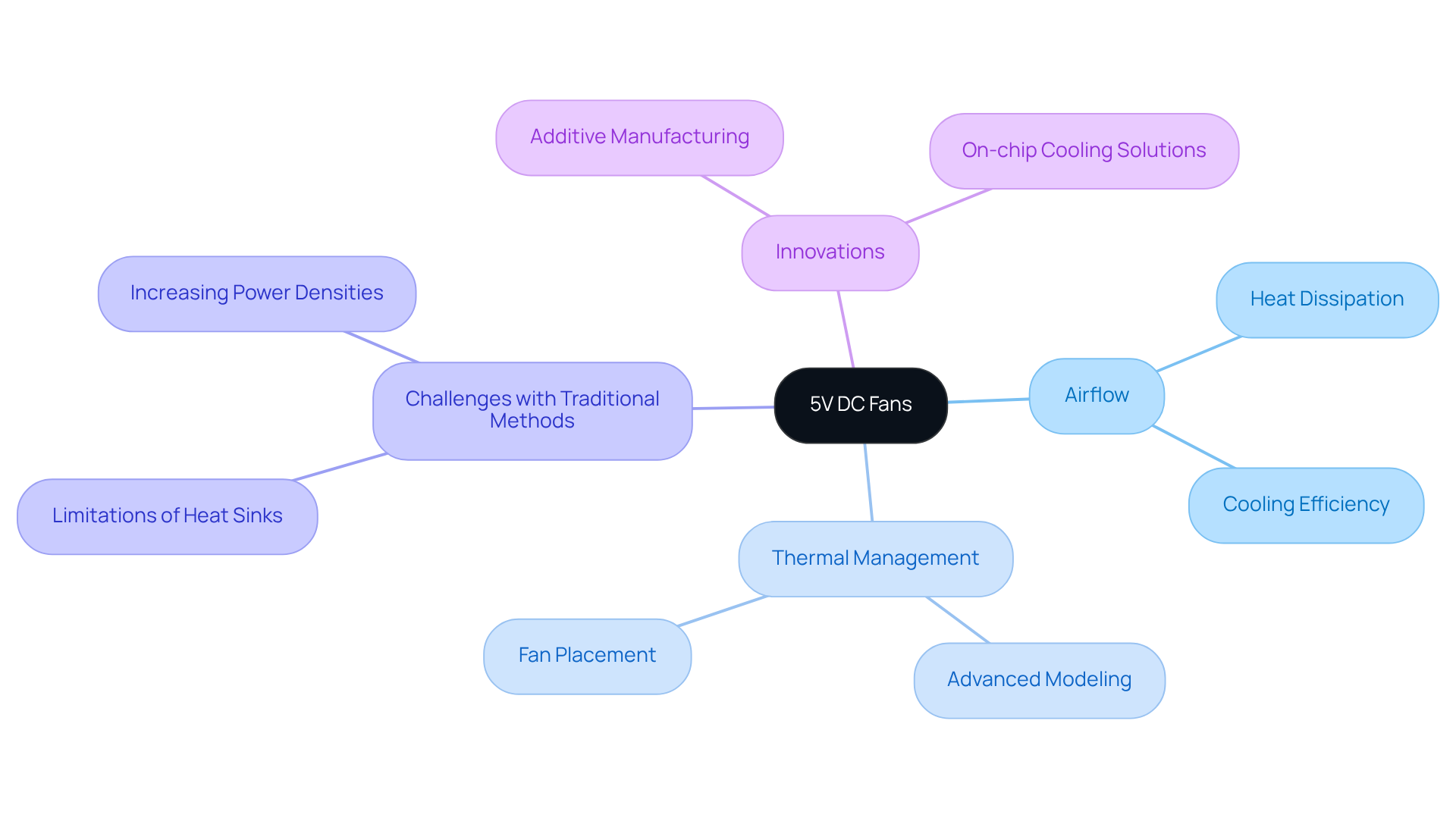
Diverse Options: Select the Right 5V DC Fan for Your Electronics Projects
The market for 5v dc fans presents a vast array of options that cater to diverse sizes, airflow requirements, and noise levels. This extensive selection empowers engineers to identify the ideal fan for their specific applications, whether they require a compact solution for a handheld device or a robust model suited for high-performance environments.
Selecting the right 5v dc fan is not merely a choice; it is a critical decision that directly influences the efficiency and effectiveness of electronic designs. Studies reveal that over 80% of premium electronic devices now integrate advanced temperature regulation technologies, underscoring the importance of meticulous fan selection.
Moreover, the rising demand for energy-efficient cooling solutions and sustainable products in developing economies accentuates the necessity of aligning fan specifications with project requirements. In a competitive market where numerous suppliers consistently introduce innovative products, engineers have the opportunity to enhance both performance and energy efficiency, ensuring optimal thermal management in their designs.
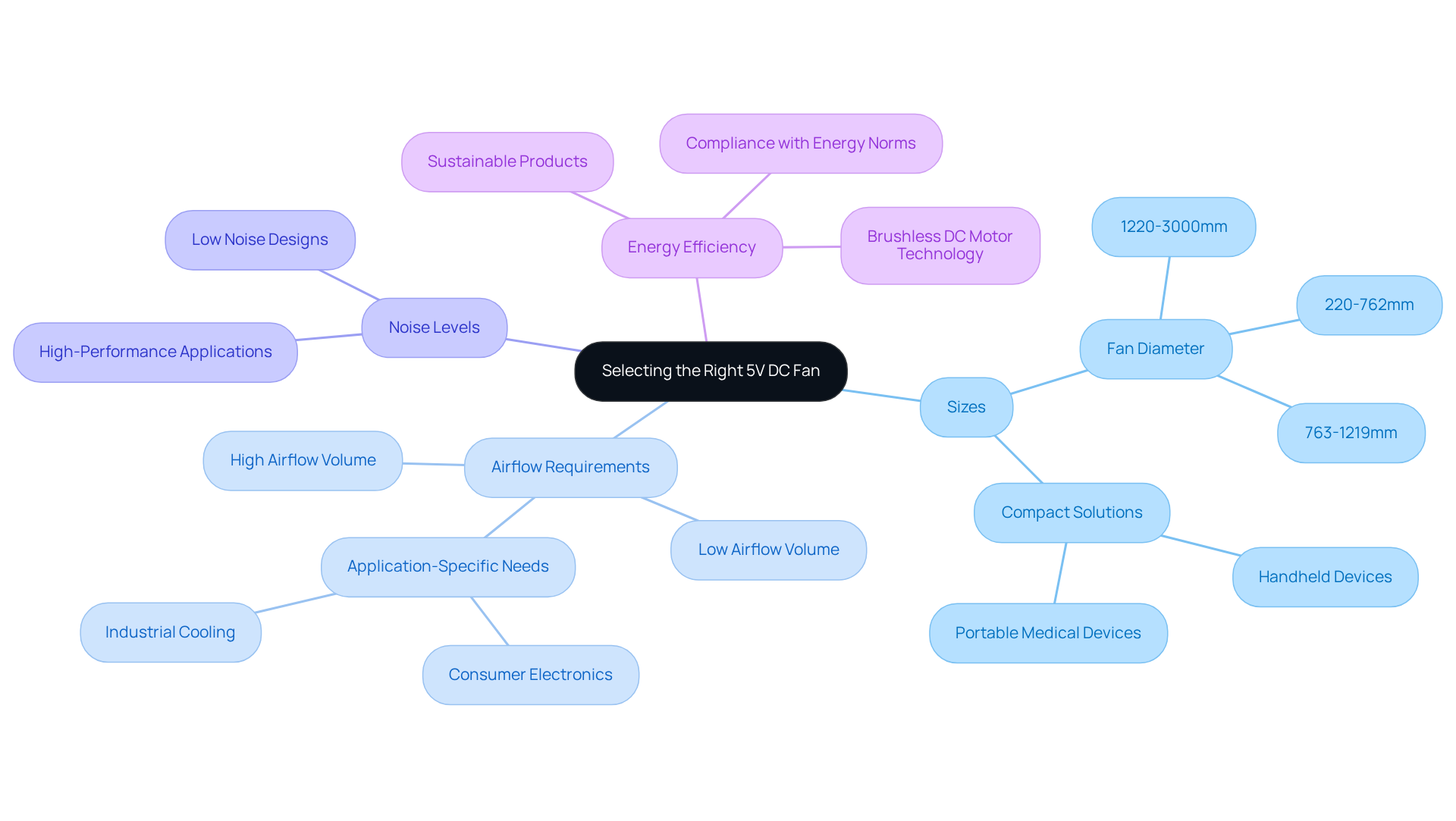
Conclusion
The advantages of 5V DC fans in electronic applications are significant, providing engineers with a reliable solution for effective thermal management. These fans deliver energy efficiency and a compact design, while also enhancing versatility, quiet operation, and ease of integration. This makes them indispensable in modern electronics.
Key benefits such as reduced power consumption, improved airflow, and cost-effectiveness have been highlighted throughout the article. The ability of 5V DC fans to fit into tight spaces without compromising performance, their adaptability across various applications, and their durability in challenging conditions further affirm their importance in the engineering landscape. With the rising demand for sustainable and efficient cooling solutions, these fans emerge as a preferred choice for professionals.
As the electronics industry evolves, embracing innovative technologies like 5V DC fans is crucial for achieving optimal performance and reliability. Engineers should view these fans not merely as components, but as essential tools in their design arsenal that can lead to enhanced efficiency and user satisfaction in their projects. Adopting 5V DC fans represents a strategic move towards future-proofing electronic designs while addressing the pressing challenges of energy consumption and thermal management.
Frequently Asked Questions
What challenge does Gagner-Toomey Associates address in the electronics sector?
Gagner-Toomey Associates addresses the challenge of maintaining optimal thermal management in electronic devices.
What types of systems does Gagner-Toomey Associates offer?
Gagner-Toomey Associates offers a comprehensive portfolio that includes cooling, power, timing, RF, and interconnect systems.
How do 5V DC fans contribute to energy efficiency?
5V DC fans operate at lower voltages, consuming up to 70% less energy than traditional AC units, which leads to lower electricity costs and minimized heat generation.
What are the benefits of using 5V DC fans in electronics?
5V DC fans help prevent overheating in computers and servers, have an extended lifespan, and produce less noise, making them ideal for sensitive environments.
How do 5V DC fans support sustainable design?
By consuming significantly less energy compared to higher voltage alternatives, 5V DC fans contribute to energy-saving initiatives and align with the demand for efficient temperature regulation.
What is a key feature of 5V DC fans regarding design?
A key feature of 5V DC fans is their compact design, allowing them to fit into tight spaces within electronic devices without compromising performance.
In what applications are 5V DC fans particularly advantageous?
5V DC fans are particularly advantageous for portable electronics and applications where space is limited, enabling effective cooling in confined areas.

